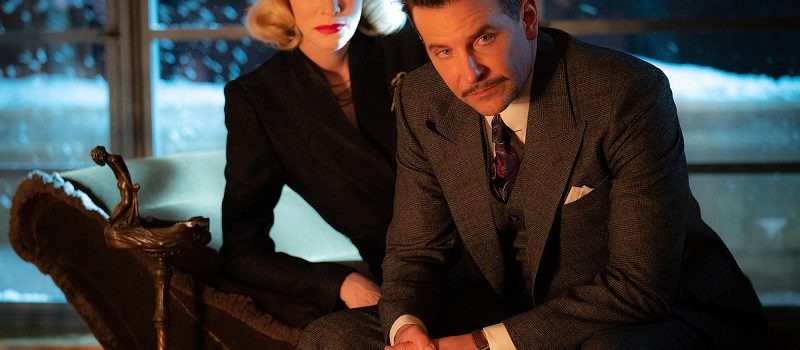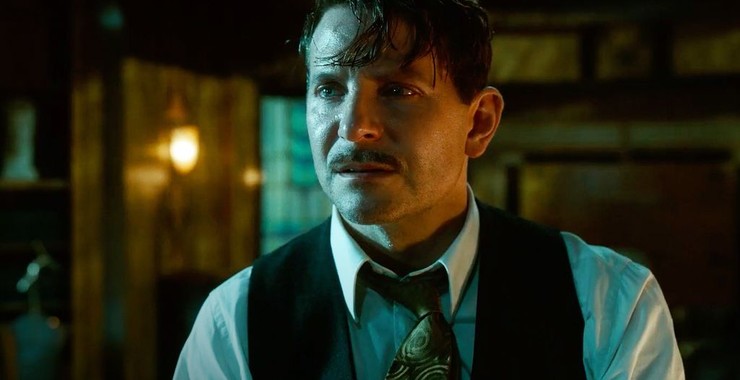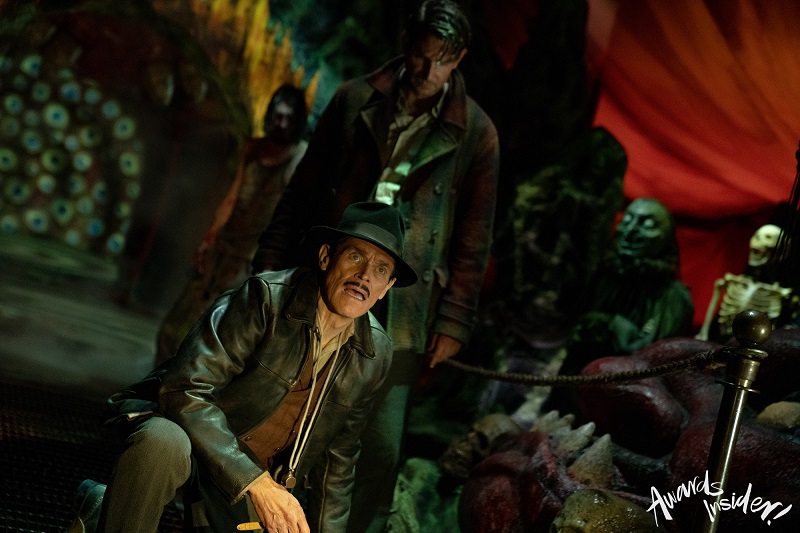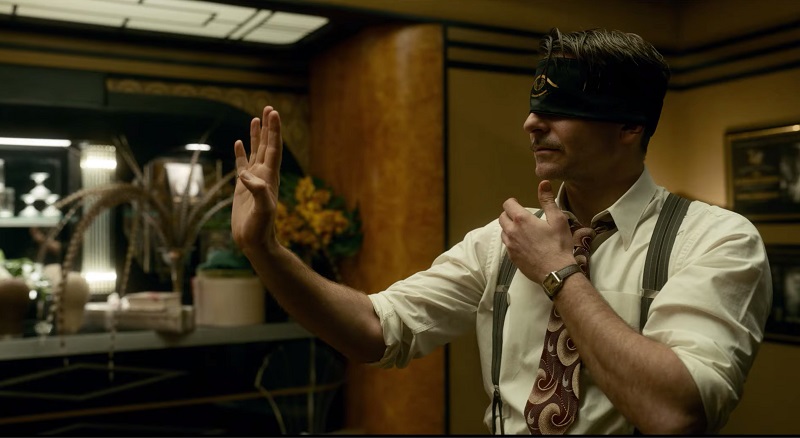There’s a secret to noir film that lies in a filmmaker’s ability to embrace the milieu and still make it uniquely their own. That is more than achieved in Guillermo del Toro’s Nightmare Alley.
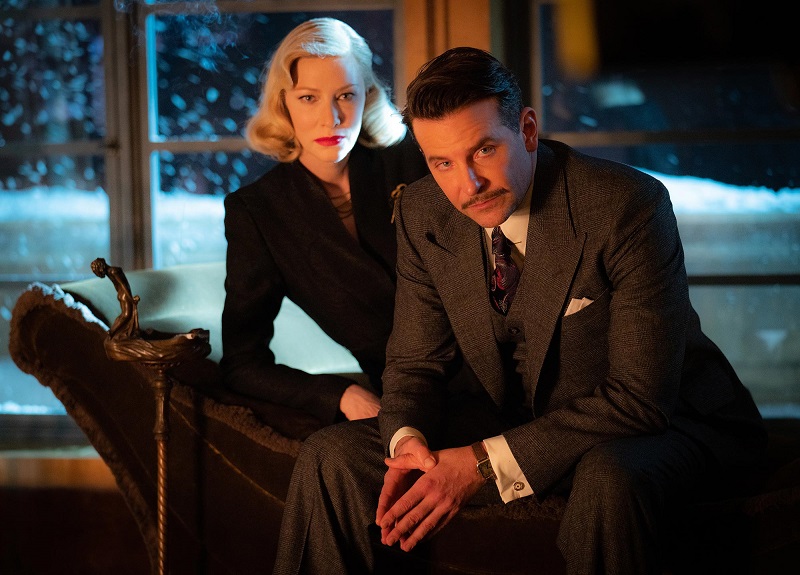
The film is a simultaneous tribute to the noir films that have indelible impressions in Hollywood history, as well as a literal remake of the 1947 noir drama of the same name. Noir films are the tiniest of needles to thread. A centimeter to the left or right of where the story aims its arrow is enough to derail the entire dramatic endeavor. Expert storyteller, especially dealing in the darker arts of cinema, del Toro navigates the land mind of an equal remake and salute to the genre with originality, his own personal penance and a lens for escapism entertainment that compels the viewer from its opening moments.
Nightmare Alley finds our cast of characters in the early 40s as America is on the cusp of war. Carnivals dot the landscape to entertain a populous ready for escapism. Those who attend such events and the carnies who make their Depression-era living living payday to payday, interact in such a way that there is a definite societal divide between the two. Bradley Cooper’s Stanton Carlisle has dreams of a higher life, but as our film begins, he is a man in desperate need of a second chance. Enter a fortune teller, Zeena the Seer (Toni Collette, The Shape of Water), who promises him more to life than the one he currently inhabits. As carnival players such as Ron Perlman’s (Strongest Man) Bruno and Willem Dafoe’s Clem Hoatley take him under their wing, does our easily drawn to the dark side Carlisle begin to show his true colors. But let’s make one thing clear. Each soul in the carnival—including Rooney Mara’s electric wonder Molly Cahill—seems to fall under his under-the-surface slimy charm.
Then he meets his match in psychologist Dr. Lilith Ritter (Cate Blanchett), who like so many noir femme Fatales is far from what she seems, does Stanton begin to lose grip on his con that could prove deadly and dangerous for many in our ensemble.
Nightmare Alley is based on the novel by 1947 William Lindsay Gresham and dripped with the elements that made noir cinema pulsate post-World War II in Hollywood. The world’s bad guys—the Nazis and fascists—needed new blood, pre-Cold War, and who better than some charming types whose eyes are always on someone’s money, inheritance, health, a rich man’s daughter, or all of the above?
Cooper is mesmerizing in the role and plays the arc impeccably. As is the case in so many classic Hollywood noirs, nothing is ever what it seems. That is certainly the case here, not only with the film itself but with our main character, Stanton Carlisle. He is very much a man of that time and as the Oscar nominee portrays him, he is equal parts endearing, effervescent, and exponentially elusive. This is the type of role that earns Oscar nomination, particularly in a film that is surely going to hear its name called when nominees are announced in January. Best Actor is a crowded field this year (isn’t it every year?), but there is something about how Cooper delivers his Carlisle that is someone caught between a hurricane and a storm of his own making.
Cooper’s carny has a knack for reading people (and their minds to an extent). He and Mara’s Cahill have hooked up a rather good system that has graduated them from the carny life to one that involves touring in theaters and staying in fancy hotels. But it is his fateful crossing with Blanchett’s doctor that turns this noir on a dime and in a manner that befits the original and the genre itself.
Blanchett is pure gold, I mean cold. The way in which she commands her Dr. Ritter is one of the more manipulated turns by an actress in recent memory in this genre of film. There are few actresses working today who could have pulled off this effort without seemingly being over-the-top and chewing scenery. She does it in the most sublime of ways that not only befit the character but bring the most welcomed and fresh take to the noir femme fatale.
The remainder of the cast is the cat’s meow in how they handle their role within the ensemble. Collette makes the uttermost of her screentime and in many ways, sets our story in motion. This is an actress who can make five seconds of screentime last a lifetime. Dafoe is every bit the carny lifer of that era who would both exploit and encourage his charges to pursue greatness in a business that involves sleight of hand over explicit honesty. He is very much a Dafoe character but within the confines of the del Toro prism.
Mara is slightly underused, but then again, there is no such thing as small parts, right? David Strathairn’s Pete is the man who truly mentors Stanton and as played by the veteran thespian, it is a role that is both mysterious, tragic, and lovable. Richard Jenkins is a man of the times with his embodiment of Ezra Grindle, a financially fortunate fellow who sadly had control in this world that was earned.
Dan Laustsen’s cinematography is a star all its own in Nightmare Alley. How the lensman framed his shots and incorporated the scenery that inhabits this world that del Toro has created is captured in such a way that it is gloriously gorgeous. Meanwhile, Ann Laustsen’s costume design plays as much a part of the feel of the time period as the actor’s performance, mannerisms, and production designer’s Tamara Deverell exquisite work.
Nightmare Alley is a film experience that keeps its audience as equally engaged and lost in its twists, turns as its dramatic and emotive collar around your throat.
Grade: A

